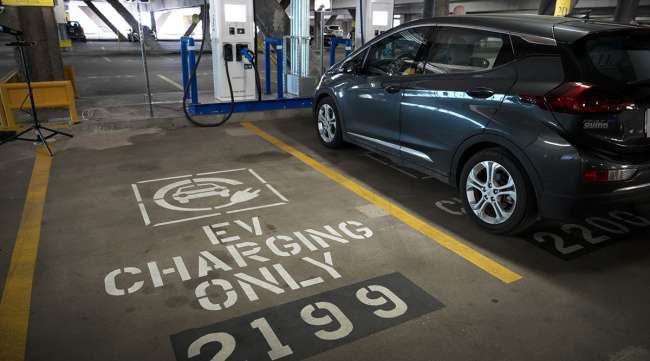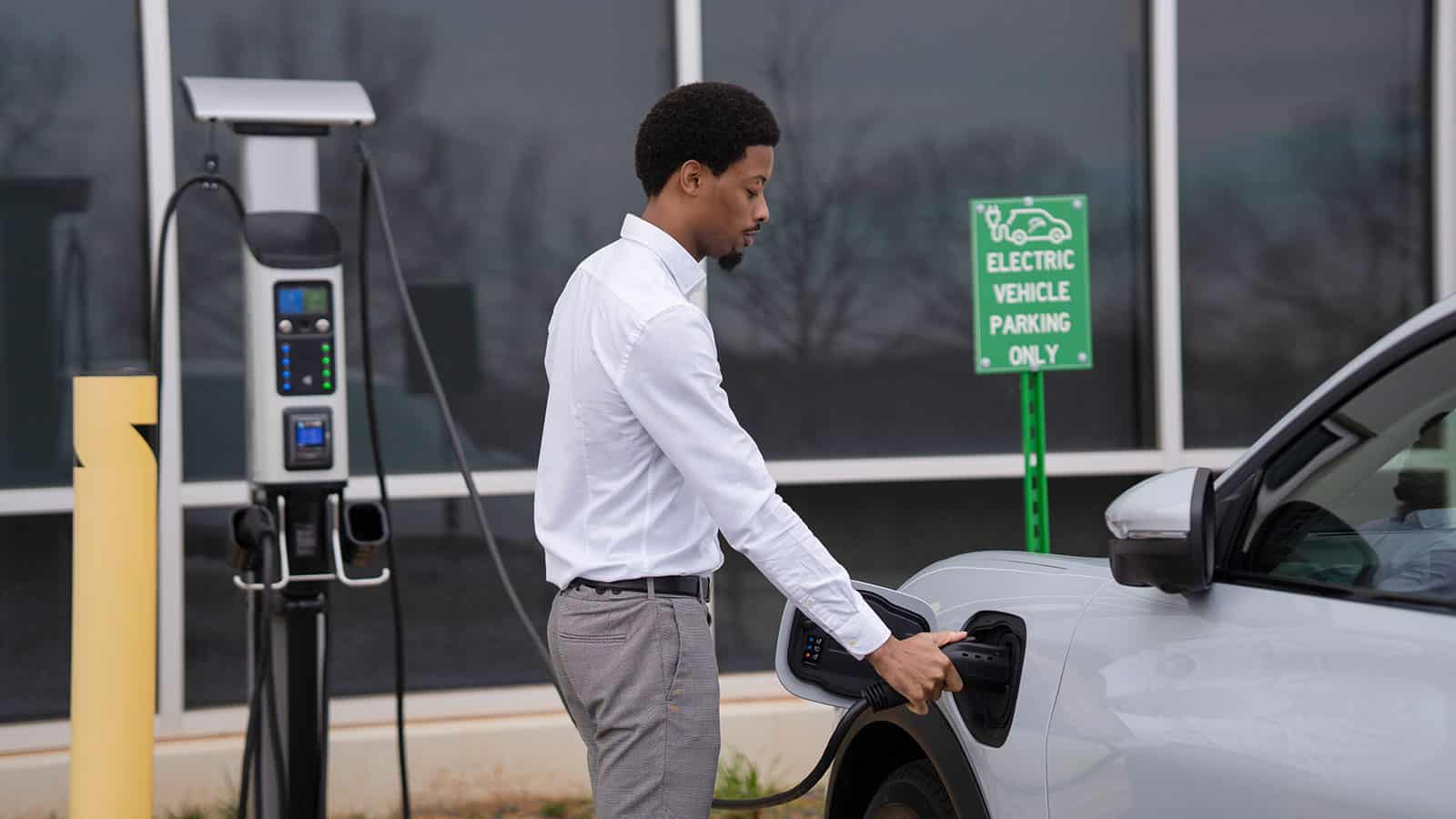New Dope in EV Charging: Just How the Industry Is Developing to Meet Demand
As the electric automobile (EV) market continues to expand, the charging framework is going through substantial improvements to deal with the surging demand. Trick advancements in ultra-fast billing innovations, paired with wise grid integration, are improving the landscape. Additionally, technologies in battery modern technology pledge boosted efficiency and sustainability. However, the search of worldwide charging standards remains a vital consider enabling seamless customer experiences and widespread adoption. The effects of these improvements raise vital concerns concerning the future of EV charging and its duty in the broader power community.
Growth of Billing Framework
The rapid growth of electrical vehicle (EV) charging facilities is a critical component in helping with the prevalent fostering of electrical wheelchair. As federal governments, private business, and customers significantly recognize the relevance of reducing carbon discharges, financial investments in billing networks have actually surged. This infrastructure growth is necessary to minimize variety stress and anxiety, making certain that EV customers have hassle-free accessibility to billing terminals.
Substantial advancements in charging terminal modern technology and deployment techniques have emerged. Urban locations are seeing a spreading of public billing terminals, while country regions are slowly being incorporated into the charging network. Partnerships between automotive suppliers and billing providers are becoming much more common, facilitating the facility of detailed networks that enhance user experience and access.
On top of that, the combination of renewable resource resources into billing stations is gaining energy, promoting sustainability in the EV ecosystem. This change not just supports ecological goals yet likewise aligns with the climbing demand for green power services amongst consumers.
Ultra-Fast Charging Technologies
Ultra-fast billing innovations stand for a considerable jump ahead in the EV billing landscape, allowing electrical cars to charge in a portion of the time compared to typical charging techniques. These developments typically supply power degrees surpassing 150 kW, with some systems rising to 350 kW or more, substantially minimizing billing times to as little as 15-30 mins for a significant charge.
Secret allowing technologies include improvements in battery chemistry, power electronics, and thermal management systems. As an example, high-capacity batteries with enhanced thermal security enable faster charging without overheating. Additionally, advancements in billing infrastructure, such as liquid-cooled cable televisions and modular billing terminals, facilitate efficient power transfer, improving the general customer experience
Significant automotive producers and innovation companies are proactively spending in ultra-fast billing networks, identifying the critical role they play in getting rid of array anxiousness and increasing the fostering of electrical lorries. As these technologies become much more commonly readily available, the EV market is expected to witness significant development, making electric flexibility a more eye-catching choice for consumers. On the whole, ultra-fast charging modern technologies are crucial in shaping the future of lasting transport, leading the way for a much more reliable and comprehensive charging ecosystem.
Smart Grid Combination

Via need feedback strategies, smart grid systems can readjust billing schedules based on grid problems and electricity pricing. During durations of high need, billing can be delayed to off-peak hours, resulting in lower prices for customers and decreased pressure on the grid. Furthermore, vehicle-to-grid (V2G) modern technologies make it possible for EVs to release power back into the grid, improving and offering ancillary solutions grid security.
Integration with renewable power resources even more boosts the sustainability of EV billing. By lining up charging tasks with durations of high solar or wind generation, smart grids advertise a greener billing infrastructure. Ultimately, clever grid combination not only sustains the growing need for EVs however also adds to a much more lasting and resilient power future, positioning the industry for long-lasting success.
Battery Developments
Amidst the quick evolution of electrical cars (EVs), battery innovations stand at the center, driving developments in efficiency, sustainability, and efficiency. As the need for EVs surges, suppliers and researchers are focusing on boosting battery technologies to resolve difficulties such as array anxiety and billing times.
Lithium-ion batteries stay one of the most extensively utilized technology, yet new materials and chemistries are emerging to improve energy thickness and long life. Solid-state batteries, as an example, promise greater energy storage capability and improved safety and security by changing fluid electrolytes with strong ones. This change can significantly decrease the danger of fire and boost the life expectancy of batteries.
In addition, advancements in battery recycling processes are important for sustainability. Companies are establishing techniques to recuperate important materials like lithium, cobalt, and nickel from utilized batteries, promoting a circular economy and decreasing environmental impact.

International Charging Standards
Initiatives are underway to develop global charging requirements that help with compatibility amongst different EV designs and charging terminals. Organizations such as the International Electrotechnical Payment (IEC) and the Society of Automotive Engineers (SAE) are working collaboratively go to my site with automobile makers and power service providers to produce thorough guidelines. EV Charging news. These criteria aim to improve the charging process, decrease the requirement for several adapters, and improve customer experience
In addition, standardization can significantly bolster the expansion of the charging network, as it encourages investment by making infrastructure development more predictable and reliable. As the EV market develops, a unified technique to charging standards will be vital for ensuring that customers can bill their automobiles easily and dependably, thus supporting the broader change to lasting transportation.
Final Thought
The electric vehicle billing market is undergoing significant makeover to attend to the surging demand for lasting transportation. Advancements in charging framework, ultra-fast innovations, smart grid integration, and cutting-edge battery services are pivotal in boosting individual experience and operational performance. The quest of international charging standards is important for guaranteeing interoperability throughout different areas and systems. Collectively, these growths position the market to support a wider adoption of electric lorries, eventually adding to a much more lasting future.
Urban locations are seeing a proliferation of public charging terminals, while country areas are gradually being integrated into the billing network. In addition, developments in charging facilities, such as liquid-cooled wires and modular try here charging stations, help with effective power transfer, improving the total customer experience.
Overall, ultra-fast charging innovations are essential in forming the future of lasting transport, leading the method for an extra reliable and considerable billing ecosystem. - EV Charging news
By aligning charging tasks with durations of high solar or wind generation, smart grids advertise a greener billing framework.Initiatives are underway to develop worldwide billing requirements that assist in compatibility among different EV designs and charging stations.
Comments on “What’s Driving the Growth of EV Infrastructure? Buy EV Charging news for Key Updates”